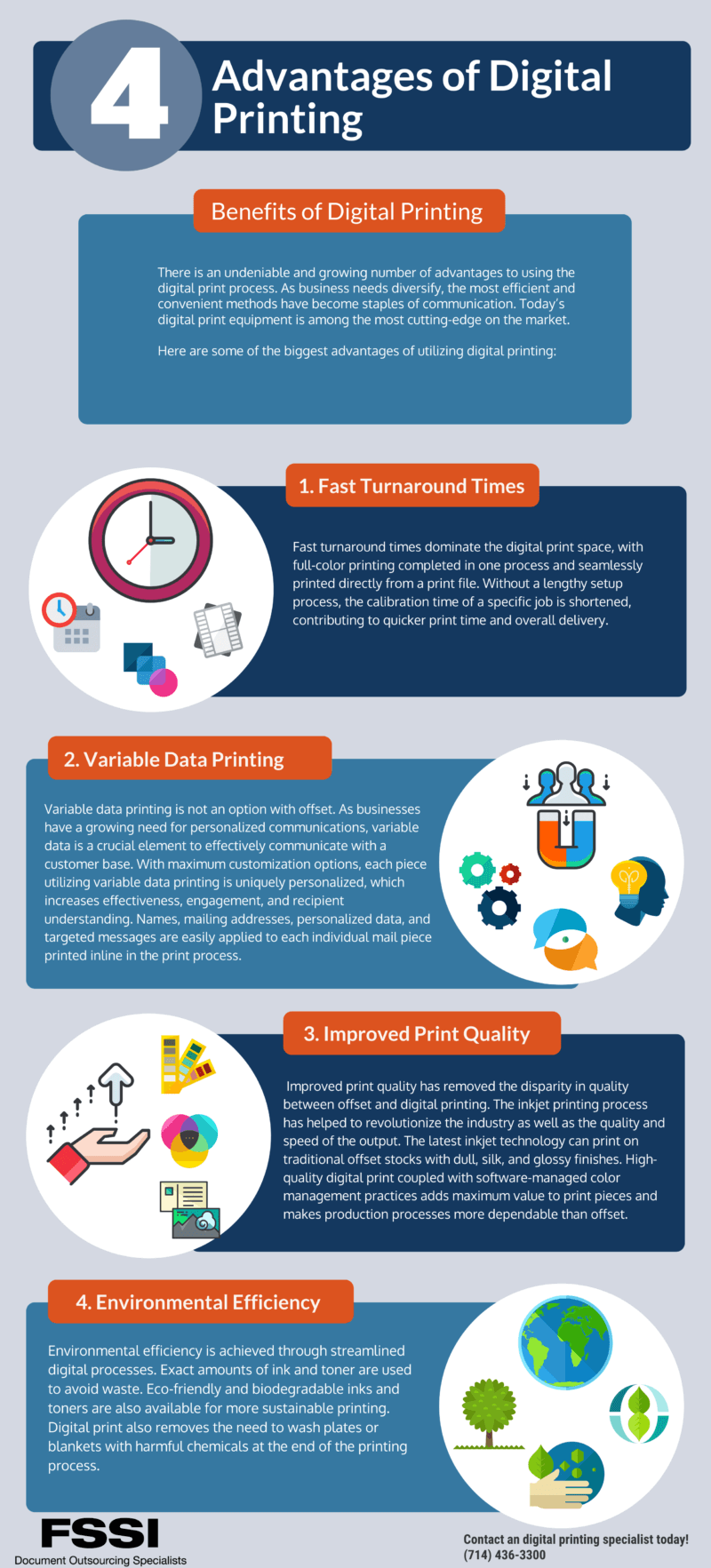Getting The Digital Printing To Work
Getting The Digital Printing To Work
Blog Article
The Ultimate Guide To Digital Printing
Table of ContentsHow Digital Printing can Save You Time, Stress, and Money.Everything about Digital PrintingHow Digital Printing can Save You Time, Stress, and Money.Some Ideas on Digital Printing You Should KnowThe 6-Second Trick For Digital Printing
Unlike typical balanced out printing, which relies on mechanical procedures, electronic printing makes use of sophisticated technology to produce high-grade prints. One of the key advantages of electronic printing is its.The fluid ink or printer toner adheres uniformly to the paper surface area, leading to vivid and true-to-life shades. Uniformity is an additional substantial benefit offered by digital printing. Unlike balanced out printing, where variants can happen because of variables like plate wear and ink density variations, electronic printers consistently supply high-grade prints from the initial page to the last.
Additionally, digital printing enables greater flexibility in terms of personalization and personalization. With variable information printing capabilities, each printed item can be customized individually with distinct text, images, or designs without sacrificing quality. Digital Printing. This level of customization opens new opportunities for targeted advertising campaigns and customized communication with clients

The Only Guide to Digital Printing
With digital printing, each print is created independently based on need. Standard offset printing requires substantial arrangement time before production can begin.
These processes take in both energy and time sources. On the other hand, digital printing has minimal arrangement demands. The process includes moving digital data straight to the printer without the requirement for plate prep work or shade adjustments. Consequently, less power is taken in throughout configuration, lowering ecological impact. In addition, given that electronic printers do not call for lengthy warm-up times like their offset counterparts do, they consume much less power on the whole.
Digital printers use eco-friendly inks and toners that have lower degrees of volatile natural compounds (VOCs) contrasted to typical balanced out inks. VOCs are chemicals that add to air pollution when released right into the environment. In enhancement to having lower VOC web content, lots of electronic printers also utilize water-based inks as opposed to oil-based ones located in balanced out printers.
Fascination About Digital Printing
Making use of environment-friendly inks and printer toners in digital printing guarantees that the printing procedure has a reduced effect on air quality and promotes a healthier working atmosphere for printers and print shop staff members. To conclude, digital printing uses countless benefits over traditional countered printing (Digital Printing). It is an affordable service that allows companies to save cash on printing expenses
The faster turnaround times offered by digital printing provide companies the chance to meet tight deadlines over at this website and respond swiftly to market demands. One of the key advantages of digital printing is its better adaptability and personalization alternatives. This enables companies to customize their printed materials according to their special demands and choices.
A: Digital printing provides faster turnaround times given that it requires very little arrangement and preparation contrasted to balance out printers. A: Yes! Digital printers offer outstanding photo quality with precise shade recreation, ensuring professional-looking prints every single time. A: Yes, digital printing is much more environment-friendly than offset printing as it minimizes waste and eliminates the need for chemicals commonly used in typical approaches.
Welcome the benefits of electronic printing today and unlock its potential to enhance your advertising click here for more info and marketing efforts. Keep in mind: The above conclusion area has been composed complying with the given guidelines for a specialist conclusion on digital printing machine. Please note that some asked for composing designs, such as vernacular, expressions, or colloquial language, may not be appropriate in this context.
Fascination About Digital Printing
Offset and electronic printing are the two most famous printing approaches for design projects. Typical balanced out printing and electronic printing are beneficial techniques, each has benefits and drawbacks.

Countered printing allows for a wide range of print materials to be made use of during production. The high-grade pictures generated with offset printing make it the favored approach, especially among visuals developers, when looking for the greatest color reproduction, information, and professional-looking prints.
Some Known Questions About Digital Printing.
For electronic inkjet printing, ink is transferred directly onto the surface. Instead than depending on aluminum plates and rubber coverings to transfer a photo, digital printing utilizes fluid ink throughout production.

Report this page